An art reflection by Kelly Schumacher (Uffenbeck) on Fra Angelico's "The Annunciation." This is one installment of a new monthly series providing reflections on works of art and music from a Lutheran perspective.
Come, Thou long expected Jesus,
Born to set Thy people free:
From our fears and sins release us;
Let us find our rest in Thee.
Israel’s strength and consolation,
Hope of all the earth Thou art,
Dear desire of ev’ry nation,
Joy of ev’ry longing heart.
— Lutheran Service Book 338
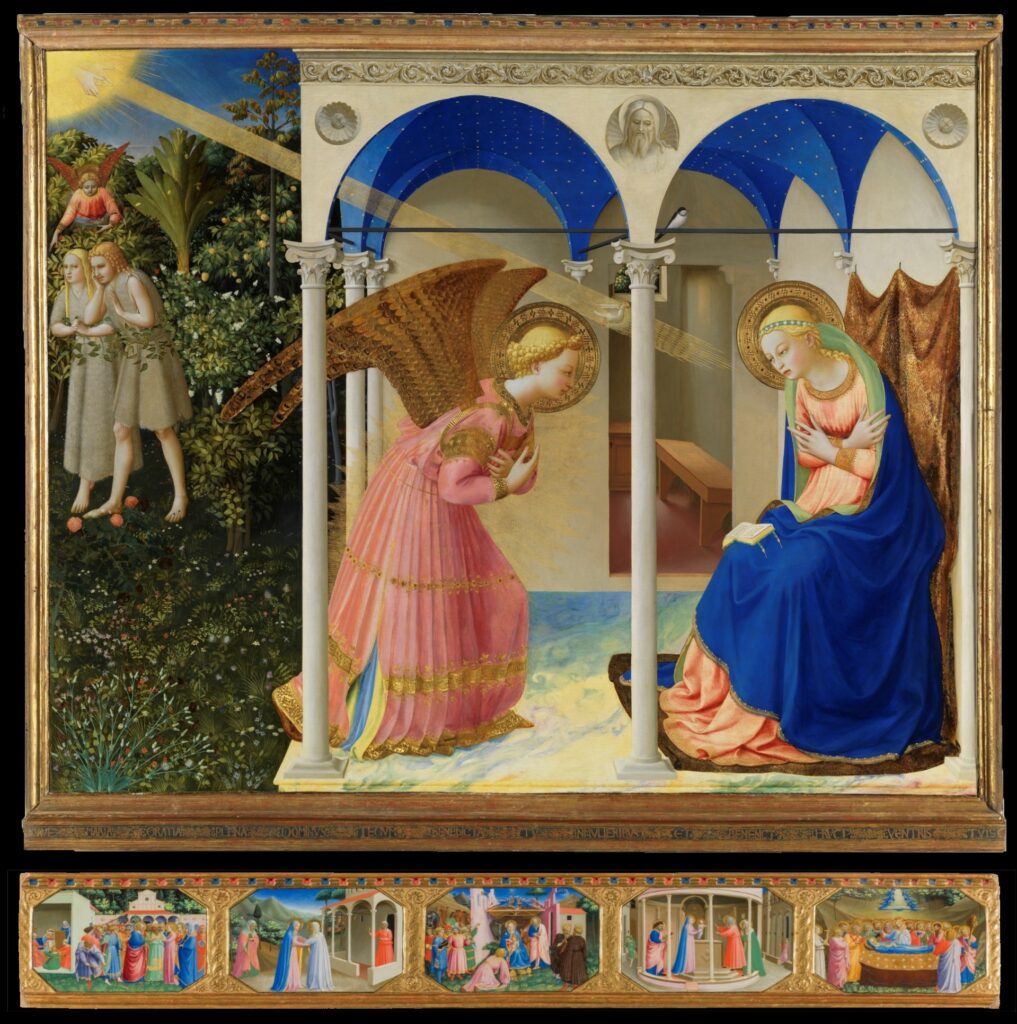
Sometimes you find a piece of artwork that stays with you over the years. There is a warm familiarity to it, almost of hot oatmeal on a cold winter’s day that sticks to your ribs. Since it is close to Christmas time, I thought Fra Angelico’s joyful and decorative Annunciation — a work that has stuck with me over the years in just this way — would be an appropriate source of reflection.
Fra Angelico was a Dominican friar who would meditate on a particular biblical text, receive a glorious vision and paint from his imagination. I was always inspired by Fra Angelico’s joyful golds and jewel-like colors.
An ancient curse
If we look at the main painting, we see two biblical texts woven together poetically. On the far left, we have the moment Adam and Eve are expelled from the Garden of Eden. Paradise is depicted with a beautiful palm tree to illustrate the tree of life. Each leaf is painted individually within Eden, showing the specificity of creation as God has made it. The earth is not an ambiguous mushy blur of green; individual blades of grass and flowers are accounted for, resembling a decorative pattern carpeting the fabric of creation.
Adam and Eve are wearing skins God gave them to cover their shame after the fall into sin. Their own attempts at righteousness (fig leaves) are not sufficient. I like to think that they are wearing lamb skin to refer to the fact that Jesus who is the ultimately the Lamb of God who will take away the sin of the world is being typed and shadowed. Adam and Eve are in the back area of the painting, meant to show that this event took place historically in the past. The fruit at their feet is part of their sin and shame. The angel pushes them away from the Tree of Life, that they might not eat of it and so die in their sin.
A promised Light
As sad as this beginning story is, there is hope! Above Adam and Eve, we see the hands of God promising us a Savior. The light of the sun holds the hands of God the Father openly releasing the gift of light. “And God said, ‘Let there be light: and there was light’” (Gen. 1:3 KJV). The creation of light transcends Genesis, making its way into the introduction of the Gospel of John:
In the beginning was the Word, and the Word was with God, and the Word was God. The same was in the beginning with God. All things were made by him; and without him was not any thing made that was made. In him was life; and the life was the light of men. And the light shineth in the darkness; and the darkness comprehended it not. … That was the true Light, which lighteth every man that cometh into the world. He was in the world, and the world was made by him, and the world knew him not. He came unto his own, and his own received him not. But as many as received him, to them he gave the power to become the sons of God, even to them that believe on his name: Which were born, not of blood, nor of the will of the flesh, nor of the will of man, but of God. And the Word was made flesh, and dwelt among us, (and we beheld his glory, the glory as of the only begotten of the Father,) full of grace and truth.
John 1:1–5, 8–14 KJV
This is a theologically particularly poignant moment. The light transforms into the flesh. At the moment of human conception, a spark of light happens. That spark of light is life. Our very own creation affirms what Scripture says about life and light. If Jesus is the light of our world, we can only imagine the beautiful light that sparkled in Mary’s womb the moment He was conceived. The Holy Spirit descending through this glorious light beam in the form of a dove reminds us of Jesus’ Baptism in the Jordan River: “And lo a voice from heaven, saying, ‘This is my beloved Son, in whom I am well pleased’” (Matt. 3:17 KJV).
Most highly favored lady
This dove is headed straight toward Mary in a yellow gold light beam; the mother of our Lord is a most highly favored lady with her elegance and demure purity. She sits as a princess with dignity and royalty.
Lutherans rightly reject the title “Queen of Heaven” which Catholics give to Mary, just as we reject calling her a “co-redeemer” with our Lord. Nevertheless, Lutherans still rightly honor Mary, for indeed “all generations call [her] blessed” (LSB 231). Our Lord Jesus is the King of Kings and the Lord of Lords. The moment Gabriel announces to her she will bear Christ is a royal event to be celebrated. This moment is the announcement of the Gospel we hear in church, and it is good news. When we fail to honor Mary rightly, we may in fact be showing our own pride of self-importance. Instead, we ought to show a healthy respect for the blessed example of humble faith that she gave us in believing the word that was spoken to her and so receiving Christ, the greatest gift in all the world for the salvation of all people.
It is fitting, then, that Mary is adorned with gold, a lapis cloak, and beautiful dress. Though historically she would have worn humble clothes, we can see that theologically she is adorned with beautiful spiritual gifts: quietness, humility, and being a handmaiden of the Lord. Her hands are softly crossed over her chest as she receives the Holy Spirit’s gift. She will willingly grow the baby Jesus for nine long months. As a mother myself, growing my own baby for nine long difficult months, I can only imagine the challenges Mary endured physically and emotionally. How difficult it must have been to tell others she would bear the Messiah and not be believed.
A deadly fruit, a heavenly Tree
The bearer of this most blessed news is the angel Gabriel. Fra Angelico painted the wings of the angel Gabriel with crushed mica. The mica specs sparkle in the light as you view the painting. It is a subtle and delicate touch put there by the artist, something you have to see in person (rather than in a print or computer image). The luminescence and joy of the colors is what draws me most to Fra Angelico’s artwork. Pure colors made from ground pigments highlight the purity and holiness of the event. Colors were not muddied but used at full strength, to glow and appear like flawless jewels on a Bible cover or stained glass window. Painting is used for joy and delight in the world of Fra Angelico.
Gabriel’s hands are crossed over the chest, bowing in humility to Mary and the blessed news being shared. Mary also bows in submission and honor. I cannot help but think of John the Baptist when he says of Jesus, “He must increase, but I must decrease. He that cometh from above is above all; he that is the earth is earthly, and speaketh of the earth” (John 3:30–31 KJV).
What a contrast! We see on the left Adam and Eve’s rebellion against the will of the Father in choosing to go their own way, thus bearing the fruit of the consequences of their actions. On the right, we see the fruit of Mary’s womb — the real tree of life which grows up to eternal life. Adam and Eve’s sin brought death, while the seed of woman brought life. In the Garden of Gethsemane, Jesus will submit to His Father to die on the cross for our redemption.
There are so many theological jewels in this piece. I have not even begun to scratch the surface of what beautiful gifts this painting has hidden within it. Fra Angelico’s Annunciation is a treasure trove of christological types and shadows of the things to come in the Incarnation. At the core of all these is the heart of this image: Mary receiving the gift of Jesus.
May God so bless you this Christmas season as you receive the greatest gift of all, Jesus the Messiah born for you in a manger. May you be reminded to look forward to that day when we will receive Him fully, at His second coming.
Wishing you a most blessed Christmas!


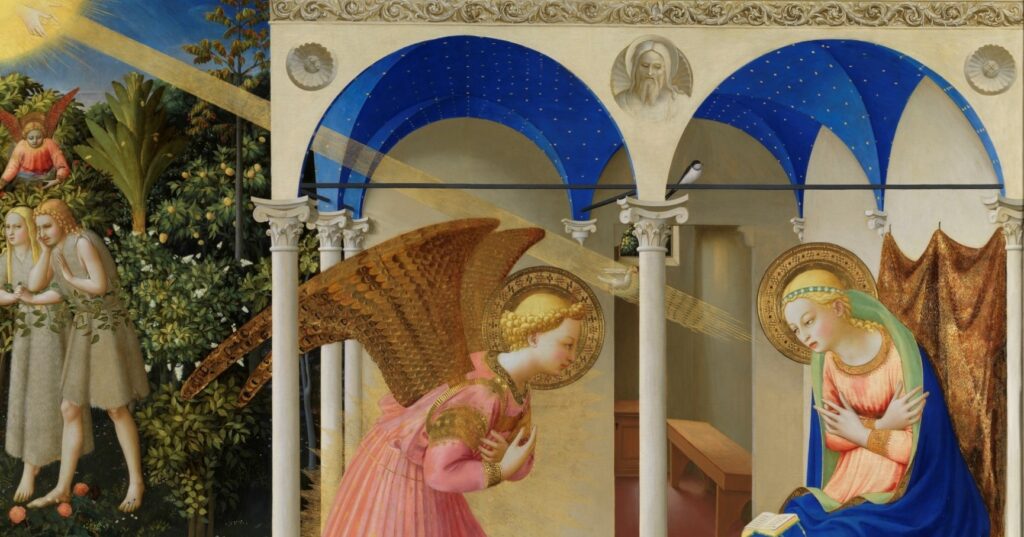
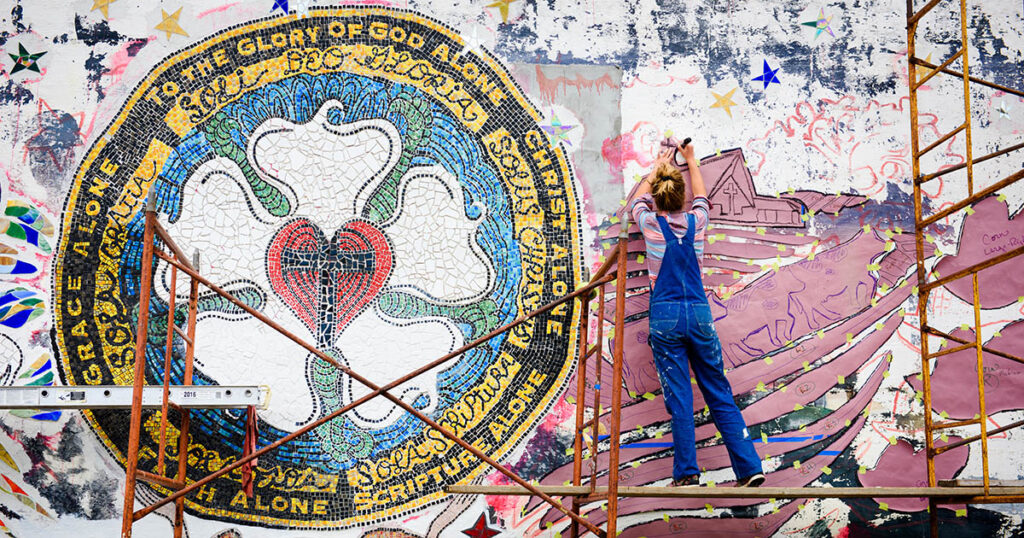
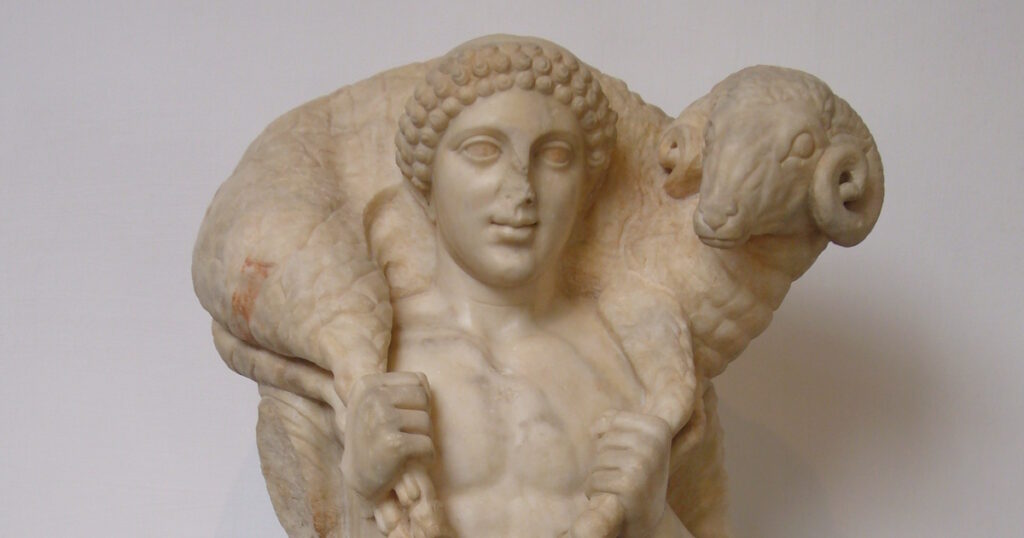
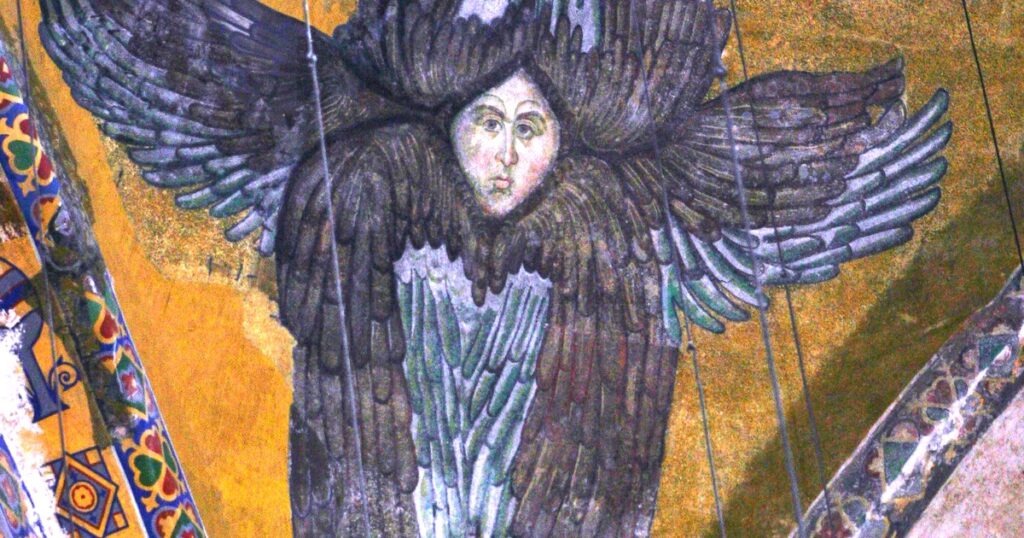
Thank you so much for this article. I really can’t tell you how much I appreciated it.